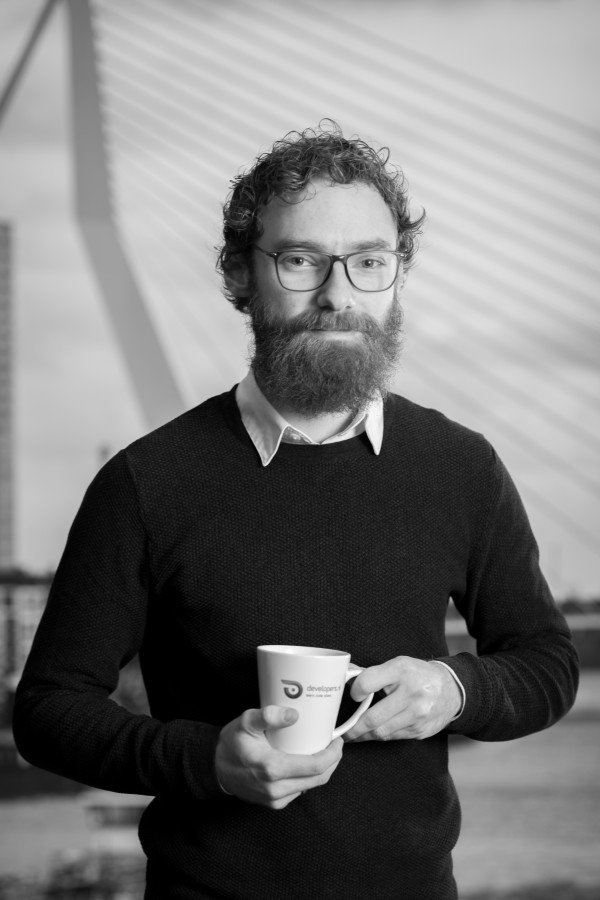
- 22/03/2018
- 3 minuten leestijd

TechNight: UX for Developers
On the evening of Wednesday 28th of February the Developers.nl office was full with interested people. Many frontend colleagues were present as well as some backend colleagues and many new faces; Students from relevant studies, teammates from our colleagues and other interested freelancers.Under the pleasure of a few drinks and delicious Chinese food, many meet up and wonder what knowledge the coming presentation will hold. After we all had eagerly taken our seat, our host of the evening Mirela Kahrimanovic started her presentation indicating it would not be an ordinary talk, but rather an active sparring session where she would provide questions and insights for us to think and talk about.
The problem
She started off by asking the audience where they currently work. That revealed that the audience was relatively mixed: Insurance companies, banks, telecom providers, AR startups. She continued by asking the guests if they were familiar with UX. Many guests raised their hands. No surprises there and she then asked if anyone actively works on UX. This time only 1 or 2 hands.
Mirela also gathered several example websites whom a developer from the audience has worked on. One example described the navigational structure of a government website. The developer who created this was asked if he is proud of the result and he answered: "Yes, it was technically complex and I'm happy I got it to work the way it does".
She then showed us how she navigated through that website to indicate how a user might work his/her way through. Interestingly enough there were many flaws that, when watching someone navigate a website, are painfully obvious. For instance, when clicking on a main navigation item, another long navigation list is shown. When clicking on another item, yet another long list is shown, while no reference to the previous list is shown. You soon become lost in the complex navigation structure.
I found this a great example where a developer has overcome a technical challenge and completed the requirements of the task but in practise did not serve the user really well.
The solution
So what can we do, as developers, to improve the user experience of our users?
This is the first tip Mirela gave us: Give your users overview and ask yourself these questions:
- Where does the user come from? (Give overview, recognition, simple navigation)
- What is the purpose of the user on this page? (Give overview, prioritise information and actions)
- What is the primary action that the user wants to undertake? (Give overview, clarify actions from information)
- What problem or need do I address when I build this functionality? (Solve real problems)
Secondly, she strongly advises to undertake the following steps:
- During development, let colleagues from another team or department, like your receptionist, use your application and get their feedback. It's good to have new eyes look at your work for a fresh perspective.
- Regularly sit with some of your end-users and watch them use your application. This will give you great insight into the habits and ways of your users and how they want to use the application.
Mirela further advises us, as developers, to join in on the design sprints to get a feel with the design and the choices made. Why were these choices made and why am I building this?
Concluding
Mirela has given us some useful insights on how to easily gain more control over our UX. She has provided us with some general tips and a way to review and preview the products we create as developers. Although I still feel a bit divided about whether developers should concern themselves too much with UX, a field that can be a specialisation on its own. I do feel the information that Mirela has given us is useful and will result in a better product, no matter which role you fulfil.
For developers looking for the best tool or the best methodology for UX this was perhaps a slightly disappointing presentation. On the other hand, I, myself, enjoyed the interaction between the speaker and the audience and feel UX in itself is a topic that is best handled by talking about it with your peers.